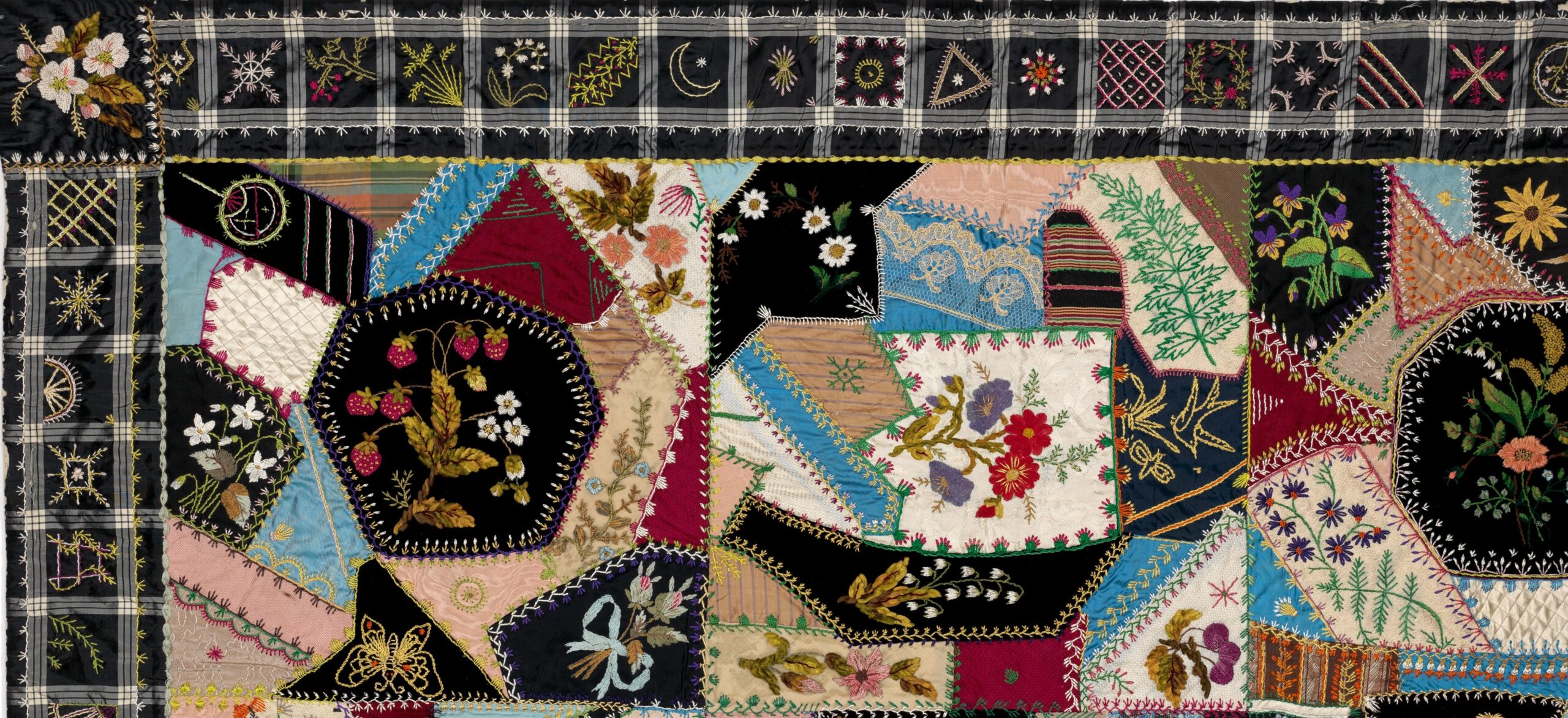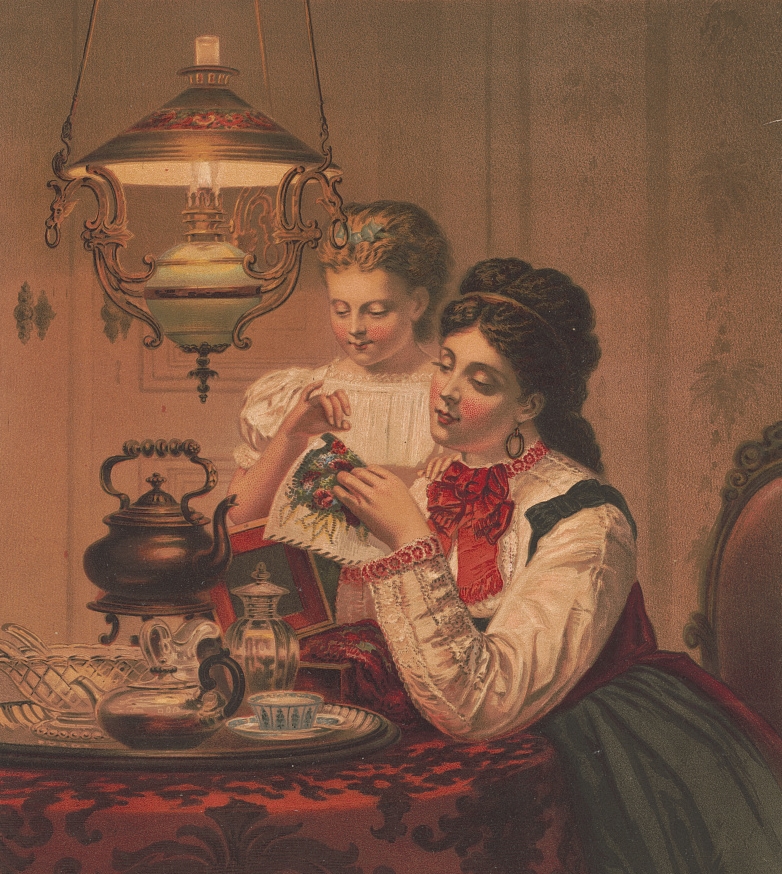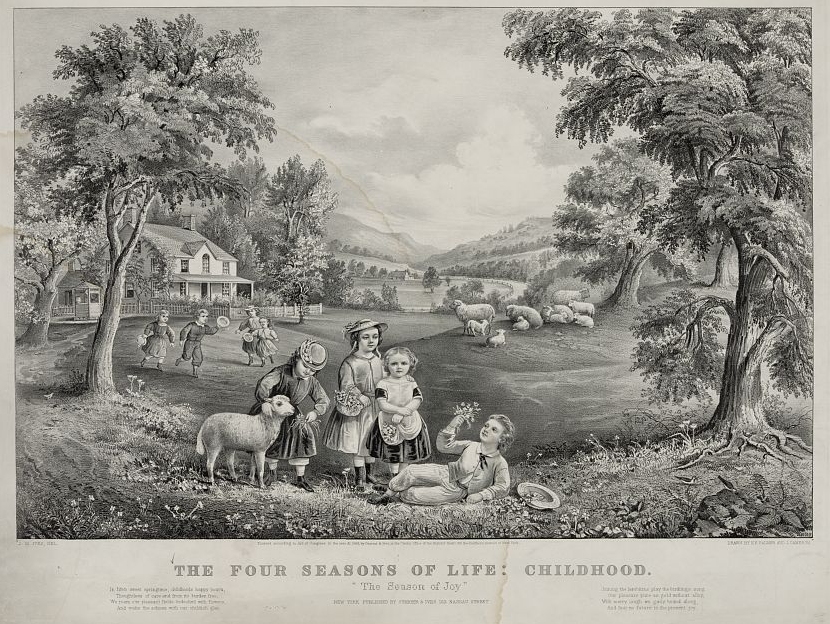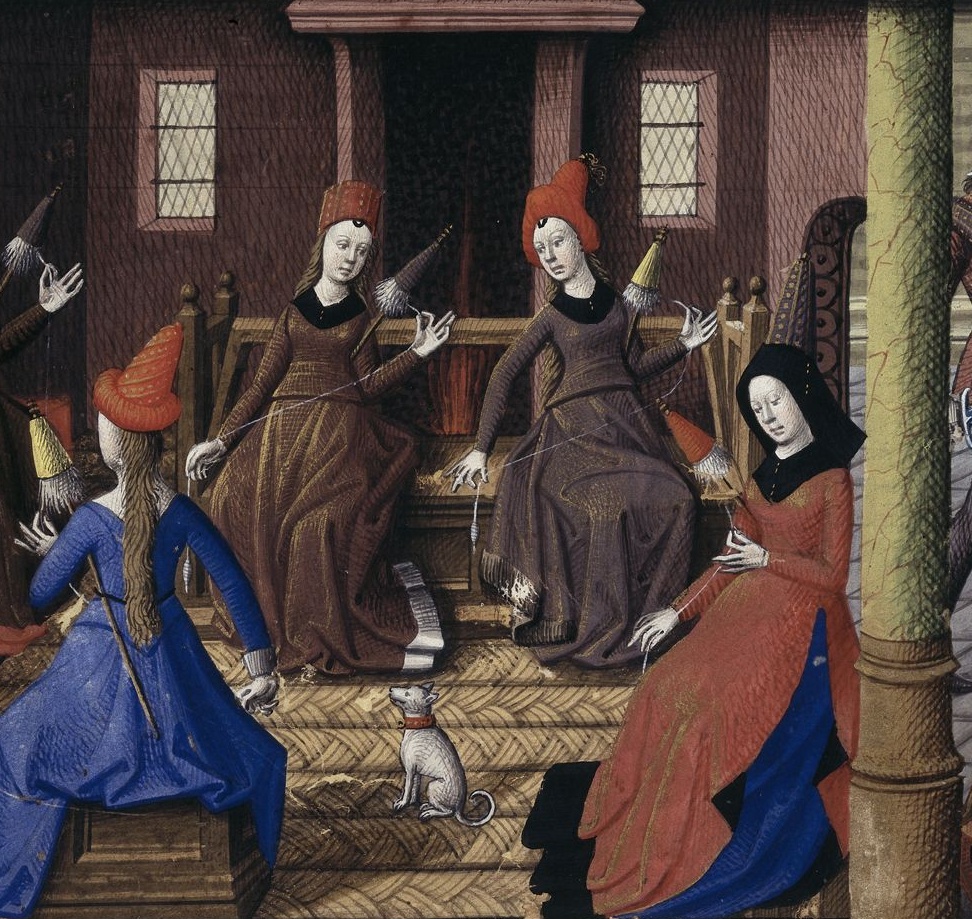Crazy quilt-making was all the rage in the late 1800s. These were not typical patchwork quilts created from cotton or wool and inspired colonial thriftiness or frontier frugality. Crazy quilts were created from fancy dress fabrics, usually silk, and decorated with ornate silk embroidery and trims. This style of quilting was a product of the era of textile industrialization, the popularity of Japanese design in home décor, and the promotion of this new type of “fancywork” in a growing number of women’s magazines and publications.
Select the images for more information.
American Silk Industry and Crazy Patchwork Quilting

Before the late 1800s, imported silk was too expensive to use for quilting. Americans had made several attempts to develop a silk industry. The 17th-century settlers in Jamestown, Virginia were encouraged to adopt sericulture (the process of raising silkworms for the fibers of their cocoons) instead of tobacco. Several Shaker villages grew mulberry trees and raised silkworms but never produced the valuable fabric on a large scale.
The United States never became a leader in producing raw silk. However, from the late 1800s to the 1940s, the American manufacture of silk, making threads and fabric from raw silk cocoons, boomed. In 1880, the Silk Association of America reported there were “25 importers and dealers in raw silk, … about two hundred and seventy-nine firms engaged in silk manufacture in America.” Silk goods included “tram (high-quality silk thread), organzine (another type of silk thread), fringes, sewing silks, . . . ribbons, dress, and fancy silks, handkerchiefs, veils, and dress trimmings, braids and bindings, and upholstery trimmings.” America’s silk manufacturing industry thrived until the 1940s when cheaper, silky synthetic fabrics such as rayon and nylon became available.
Japanese Design & Crazy Quilts

The asymmetrical design of crazy quilt blocks was probably influenced by the popularity of Japanese art in the late 1800s. One source of this interest was exhibits in the Japanese Pavilion at the Centennial Exposition in Philadelphia in 1876. Japanese fans, paper mats, fabric, wallpaper, and decorative designs became the rage in home décor. Popular oriental designs included cranes standing in water, owls, peacocks and other birds, men and women in kimonos, fans, teapots, spiders in webs, insects and butterflies hovering over flowers, branches of blossoms, and especially chrysanthemums. All these motifs were embroidered on crazy quilts.
Crazy Quilts As Fancywork

The home sewing machine was introduced in the 1850s and became affordable for average households by the 1860s through installment plans. Women were freed from “plain sewing” for daily household needs and pursued more creative projects called “fancywork.” At the same time, Industrialized printing processes produced more and more books, newspapers, and women’s magazines full of ideas for creative projects. At the height of its popularity from the 1840s through the 1880s, the fancywork craze was about hand-crafting decorative items for the home or for gifts. Crazy patchwork was just one example of popular fancywork used to decorate the home.
How to Make a Crazy Quilt

Crazy quilts were usually constructed a block at a time. Pieces of fancy dress fabrics were usually hand-sewn to a lightweight foundation fabric. Straight lines were to be avoided; curves were the most fashionable. Decorative embroidery borders were often added where the fabrics joined and decorative embroidered images appeared throughout. Usually, designs for decorative stitches came from patterns in magazines and books. The quilter could trace the design on the fabric or purchase iron-on or perforated patterns with holes along the lines of the design. Stamping powder was applied to a perforated pattern laid over the fabric, creating powdered dots to follow. Some companies offered fabrics with pre-printed designs and manufacturers sold pre-embroidered appliques to be quickly added to a crazy quilt. Crazy quilts might also feature painted designs, and other decorations such as ribbons, beads, metallic threads, or cigarette or tobacco silks.
Decline of Crazy Quilts

The era of quilting with silk fabrics, both crazy quilts and more regular designs such as log cabins or fan designs, reached its peak in the 1880s. American quilters began to rediscover the more traditional cotton patchwork designs of previous eras. In the first decades of the 1900s, the chaotic clutter of a crazy quilt that mirrored a previous era Victorian home décor fell out of style. Some continued to make crazy quilts, but often these were more practical, everyday versions made from cotton or wool without the fancy embroidery.
Test your knowledge of 19th-century needlework with this fun quiz – Fancy Work: Needlework of the 1800s Quiz
Header Image: This crazy quilt (c. 1877) was made as a memorial after the death of twenty-year-old Grace Gertrude North (1856–1877), the only child of Tamar and Benjamin North of North’s Landing, Indiana. From the collection of the Metropolitan Museum. For more examples of crazy quilts, view the online image collection of the American Folk Art Museum.

References
Crazy Quilts by Penny McMorris (excellent, thoroughly researched history of crazy quilts with photographs – I highly recommend)
“The Silk Industry in America” by Samuel J. Barrows, The Atlantic, November 1880




One thought on “The Crazy Quilt Craze – History of 19th-century Crazy Patchwork”